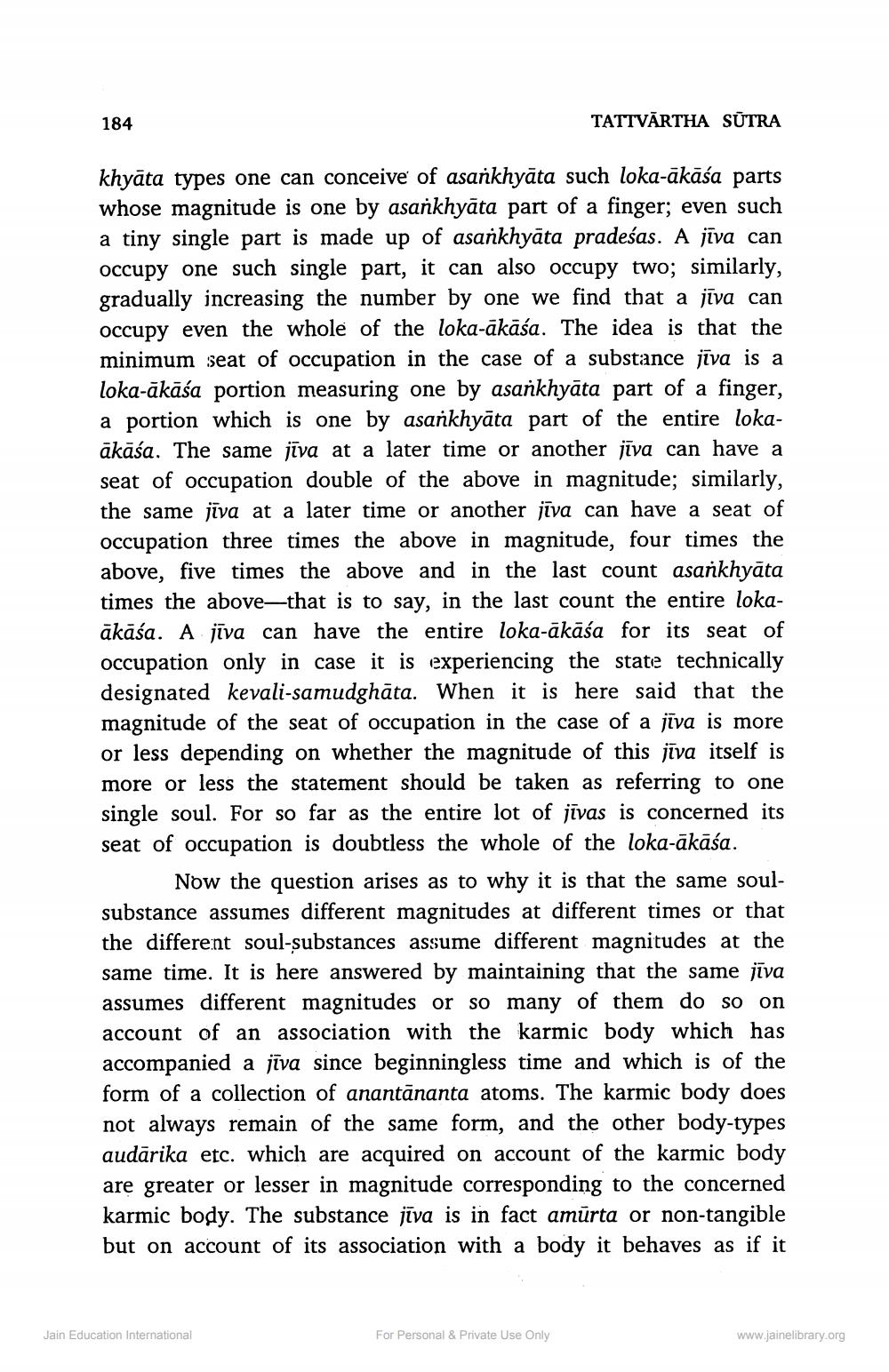________________
184
khyāta types one can conceive of asankhyāta such loka-ākāśa parts whose magnitude is one by asankhyāta part of a finger; even such a tiny single part is made up of asankhyāta pradeśas. A jīva can occupy one such single part, it can also occupy two; similarly, gradually increasing the number by one we find that a jīva can occupy even the whole of the loka-ākāśa. The idea is that the minimum seat of occupation in the case of a substance jīva is a loka-ākāśa portion measuring one by asankhyāta part of a finger, a portion which is one by asankhyāta part of the entire lokaākāśa. The same jīva at a later time or another jiva can have a seat of occupation double of the above in magnitude; similarly, the same jīva at a later time or another jiva can have a seat of occupation three times the above in magnitude, four times the above, five times the above and in the last count asankhyāta times the above-that is to say, in the last count the entire lokaākāśa. A jīva can have the entire loka-ākāśa for its seat of occupation only in case it is experiencing the state technically designated kevali-samudghāta. When it is here said that the magnitude of the seat of occupation in the case of a jiva is more or less depending on whether the magnitude of this jiva itself is more or less the statement should be taken as referring to one single soul. For so far as the entire lot of jivas is concerned its seat of occupation is doubtless the whole of the loka-ākāśa.
TATTVĀRTHA SŪTRA
Now the question arises as to why it is that the same soulsubstance assumes different magnitudes at different times or that the different soul-substances assume different magnitudes at the same time. It is here answered by maintaining that the same jīva assumes different magnitudes or so many of them do so on account of an association with the karmic body which has accompanied a jīva since beginningless time and which is of the form of a collection of anantānanta atoms. The karmic body does not always remain of the same form, and the other body-types audārika etc. which are acquired on account of the karmic body are greater or lesser in magnitude corresponding to the concerned karmic body. The substance jiva is in fact amurta or non-tangible but on account of its association with a body it behaves as if it
Jain Education International
For Personal & Private Use Only
www.jainelibrary.org




